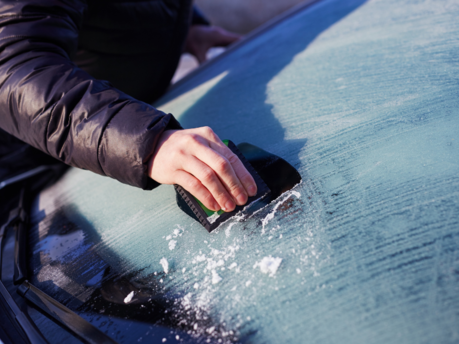7 ways to defrost your windscreen
Clear your frosted windscreen in minutes using these simple techniques
It’s early in the morning, the temperature has dropped below freezing overnight, and you’ve woken up to find your car windscreen covered in a thick layer of frost. Winter is here, and so is the daunting task of defrosting your windscreen every morning.
Driving with a frosted windscreen is not only dangerous, but it can also lead to fines from the police. So, if you’re trying to make it to work or school on time without any trouble, then you may find these seven ways to safely clear the frost from your windscreen useful.
Quick and easy ways to defrost your windscreen
1. Traditional scraping
The most straightforward and time-tested method of removing the ice from your windscreen is using a good old-fashioned ice scraper. This method — which we all know and love — may take a little effort, but it’s a reliable way to ensure your windscreen is clear before you hit the road.
Start by switching on your engine and letting it idle to warm up on the inside. While it’s warming up, use an ice scraper (or dig out a credit card if you don’t have one) and gently chip away at the frost. Try not to use too much excessive force as you don’t want to scratch the glass.
2. De-icing spray
Readily available at most petrol stations for just a couple of quid, de-icing spray is an affordable and convenient option for removing the ice from your windscreen on those cold mornings.
Here’s how to use it: Spray the de-icing solution evenly across the frosted areas, allow it to work its magic for a minute or two, and then gently wipe away the frost and ice with a cloth or scraper.
3. Air conditioning and heating
If you don’t have a scraper or de-icing spray to hand, you can use your car’s air conditioning to blow warm, dry air onto the windscreen. Start by switching the engine on, turning the air conditioning onto full-blast, and making sure the temperature is set to high heat.
It may take a good few minutes, but this method will gradually melt the ice from the inside out. At the same time, you should switch on the rear window heater and heated mirrors, if you have them of course.
4. Vinegar and water solution
Make your way to the kitchen and get your hands on that bottle of vinegar that's been sitting in your cupboard for months — we’ve found a use. The acetic acid in the vinegar can help to melt the ice without damaging your windscreen.
Mix equal parts of vinegar and water together in a bottle, spray the solution on your frosted windscreen, let it sit for a few minutes, and gently scrape away the frost.
5. Windscreen frost guard
One way to prevent your windscreen from frosting up in the first place is to cover it. By doing so, you’ll be creating a barrier between the glass and cold air reducing the amount of moisture that can condense on your windscreen.
The best way to do this is by getting yourself a designated frost guard that perfectly slots over your windscreen and tucks in underneath your windows, fixing it in place. You can also get the same effect from using a towel or cardboard, however, you may find it tricky to stop either from blowing away.
6. Park strategically
Another preventative measure you can take to prevent your windscreen from frosting up is to park your car strategically. For example, if possible, park your vehicle in a garage or under a carport to shield it from the rain or snow. If this isn’t an option, then park with your windscreen facing east so that the morning sun, if any, can help defrost your car naturally.
7. Pour warm water
If you have no other option, then pouring warm (not boiling!) water onto the windscreen is an effective way to help melt any stubborn frost. Start from the bottom and work your way upwards. Be careful not to pour any warm water onto any cold glass as it could result in a nasty crack across your windscreen.
Protect your car with an extended warranty
As the winter approaches, it’s important to ensure your car remains protected, not only from the harsh effects of frost and ice but from unexpected repair costs as well. Whether it’s a frozen engine or a malfunctioning heating system, get yourself a warranty plan from Warranty First that covers you from unwanted costs.

